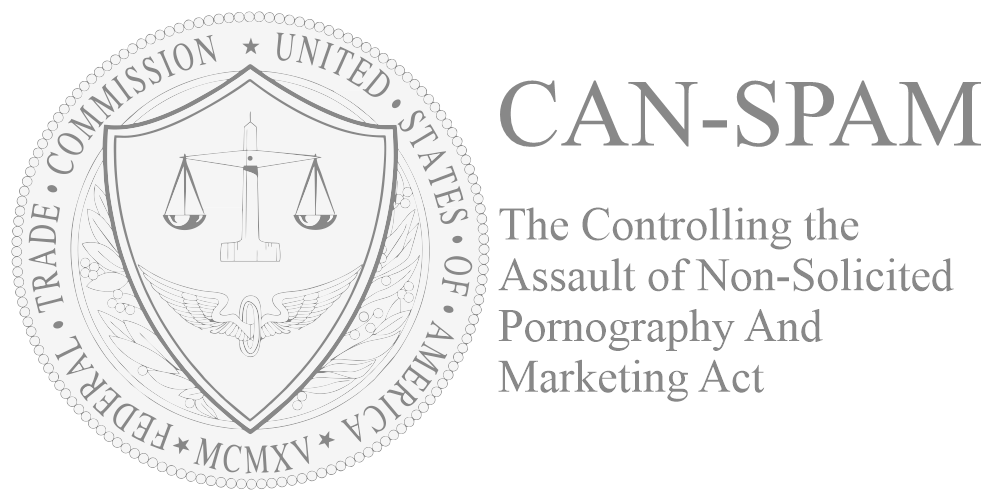Let’s face it, b2b prospecting is still the best channel for marketers out there. When done properly, it gives results fast and it converts faster than any other channel today. But it has become extremely difficult, and of course for a reason. There are a lot of “restrictions” when you do prospecting. There are a lot of legal regulations that you must pay attention to when you do prospecting.
Here in bSpec we have a huge team of b2b marketing experts, email content writers, and amazing developers that can handle your campaign instead of you – and you are left doing what you love doing, attend meetings, close deals and grow your firm. At the time of writing this article, in a period of a pandemic, our average positive rate is 3.83%. So, what that means in terms of numbers is that you will reactive 38.3 leads each month on average. And yes, we have a process and in-house technology that our experts use to deliver a constant result every time, forever.
Market Assessment and Targeting
Each marketing campaign starts with a market assessment or research and targeting. Based on your company’s business model and niche, the least you should do is a brief market assessment where you will understand the size and the potential. Then you do a market target, most commonly, based on industry, job title, company size, etc.
Before each campaign, here at bSpec, we do a deep market evaluation based on your business model, so we can segment the market and create a market research report.
Legal Compliance
This is the most important step but at the same time the most neglected one. Today, with the GDPR in place and other legislation such as CAN-SPAM and CCPA in the USA, IAPP in Russia, LGPD in Brazil, the upcoming PIPL in China, and many more, we should be more careful than ever.
bSpec is compliant with all regulations and we can provide Business Prospecting services globally.
Source of Prospects
There are two main sources of prospect, vendor bought and social media, websites, search engines, etc. You can go either way, depending on your budget and time. Both are not perfect of course, they have pros and cons.
Vendor
There are a lot of vendors or database/lists sellers of prospects out there, just google them. But let’s see what the pros are:
- Easily found lists of prospects
- Prospects usually have contact information that you can use
And the cons are:
- Old or outdated prospect information
- Reselling contacts
So let’s talk about the cons for a moment. What do we mean by “outdated contacts”? In the b2b sphere, outdated contact is a common thing. Because people tend to change jobs frequently these days, according to monster, people change jobs every 4.2 years and according to the USA Labor Statistics, that average is 4.1. According to these stats, 20% of the contacts are outdated in just 10 months and 40% in just 20 months.
Also, vendors tend to resell the same contacts to multiple buyers. If we speculate for a moment and say that the vendor sells the contact to at least 50 marketers, that means that that prospect has received 50 prospecting emails – and let’s be honest, not every email is so good that the prospect will want to receive it again and again, so the prospect will ask the administrator to change their email address, so again, we might end up with either frustrated prospect or invalid contact information.
bSpec doesn’t use vendors as a source of prospects because of the relevance of the contact details. In our experience, almost 55% of vendor data is outdated. We always use fresh data.
Year 1
Year 2
Year 3
Social Media
The other option is to use social media, which is a good source of prospects. There are only a few B2B social networks that are relevant, and people use them daily, so make sure they are popular because if they are not, then the information there probably is outdated as well.
bSpec uses social media and relevant search engines and other sources in acquiring prospect data. Because we’re obsessed with the relevance and freshness of the data, we do multi-point checks of every prospect before we contact them.

Email Finder
After you extract information from social media or other up-to-date sources (search engines, company websites, etc.), you need to find the prospect’s email address (if you choose to email as a channel of communication). The most effective way of doing this is by using an email finder. These tools use algorithms to guess the email address. Many of them might verify the email address as well.
Here at bSpec we have our own in-house email finder tool, but we also use other 3 to check the validity of the data and source of the information.
Email Verifier
Then you have to verify the email address received from the finder tools. Why is it important to verify? Because wrong emails damage your sender’s IP address and your domain reputation. If you want to hit the inbox you have to make sure your prospect’s email is valid because if you have a big bounce rate, you can forget about the inbox. Your email will be either placed in the promotion folder (if you are lucky) or the spam folder.
bSpec uses multiple email verifier services that are in our in-house systems in order to check the validity of the data.
Email Sending App
There are literally thousands to choose from. Also, many of the vendors have their own sending app. If you decide to take that path, maybe you won’t need a dedicated sending web app. There are few features to check when you search for the right one. It must have merge options, click and open analytics. If you don’t want to pay for a fancy web app, you can always use Google spreadsheet with mail merge addon to send and merge email and then UTM to track click and use an image tag to track open rates. To sum up, which app you will choose depends on your technical skills and how much free time you have.
Here at bSpec we have an in-house system that does this for us. But the whole operation is overlooked and controlled by our marketing professionals.
Exclusion
Before you start sending, you have to make sure you clean up the list. First, you need to exclude all clients, because it is embarrassing to send a client an automated message. Second, you have to make sure all previous unsubscribers or prospects who asked to be removed from mailing lists are to be excluded (this is a legal requirement).
For us at bSpec exclusion is a daily thing. We constantly update the exclusion and our systems flag the unsubscribers and the replies so our operations team can have a look and decide further actions.
Email Service Provider
Now you are at a point where you need to decide whether to use your company email or buy a fresh domain and a new ESP subscription. What is the dilemma here? If you’ve done any prospecting before, and you have received a lot of bounces or unsubscribes, then you have to go with a fresh domain and new ESP subscription. If this is your first rodeo, then you can use your current setup, but be careful to follow these steps, because you don’t want to damage the company’s sending reputation and your colleagues’ emails to end up in the spam folder.
Because of the uncertainty of our clients’ previous actions and how clean they kept their sending activities, we always use new ESP and a fresh domain.
Email Content
How important is the email content? Very! It is the most important step in prospecting! Every email contact has three elements: subject line, body, and signature. A good subject line is important if you want good open rates. The body is crucial for conversion. You need to be precise with your offering and focus on the important features – don’t waste prospects’ time with stories about you or your brand – no one cares about that. They only care about how your offering will help their company. And finally, signature – where you need to place your contact information, and don’t overdo it with images links or other promotional/marketing contact. Be very professional.
Here at bSpec we have professional content writers who write the content for our clients. They’re doing that daily and have vast experience of what type of subject line can increase open rates or what content in the body converts. Our dev team has created an AI that assists our content writers in writing the perfect copy. The AI flags “spam words” and it has a smart feature of writing Combos. Combos are permutations of several body copies that our systems do. This way we make sure every email sent is unique and they don’t look like templated emails but each has a unique content combo. Also, recently, we have integrated GPT-3 AI that helps our content writers write the ultimate content. Please note that we use AI only to assist our content writers – we never send a single email without previously being approved by the content writers – the emails we send are 121 and highly conversational.
Technical Setup
Technical setup takes place in a few of the previous steps. Setting up the domain’s DNS email prover’s DNS like DMARC, DKIM, and SPF. Also, you may need a technical setup with the content if the email sending web app doesn’t supper HTML. It is recommended to upload your content in HTML and plain text.
As a marketing/technology company, we employ dev guys who handle this instead of our clients. Also, we have a smart system that raises a flag if even a single setting is misconfigured.
Spam and Deliverability Check
Just before you start sending, you must make the final checks. First, you have to check if you have some misconfiguration. Then check where your email ends up – spam, inbox, promotions, or updates.
So to check the misconfiguration, the one tool that I can recommend (and there are a lot of others) is https://www.mail-tester.com/. It is very simple to use and it will take you a few seconds to find issues with your configuration. If you find some issues, please return to the previous steps and implement the issues that the mail tester addresses and repeat the test until you get a perfect score.
Then we need to make sure we don’t “burn” prospects. However, they all have 121 messages in their inbox. This is where we perform the so-called inbox placement test. Again, there are a lot of tools out there, but I can recommend https://www.gmass.co/inbox which is free and relatively fast. If you notice that your content does not end up in the inbox, there can be a few problems that you can address:
- Return to the previous test mail tester and repeat
- Content is spammy – change the content
IP reputation or domain reputation is very low – please use a tool like http://www.reputationauthority.org/ to check the problem with your IP or domain - Your email sending app is flagged as a mass sender by the recipient ESP
Here at bSpec we have automated these tests, and we literally do hundreds of checks each day. It is very simple – the prospect must see the message in the inbox, there is no other alternative. We have our own tools that do spam and deliverability checks, but we have also integrated with at least 15 others – just to be sure we never miss the inbox.
Email Sending and Follow-ups
At this step, you send the first emails and you need to create a schedule and then send follow-ups. People are very busy and follow-ups these days are very important in order to catch their attention.
Our marketing operations team does all of this for our clients. They send emails on their behalf, follow up on no replies, reply to legal concerns, track replies, and a lot more.
Tracking and Analytics
And now we come to the science section, as we call it. Here you should track as many metrics as possible in order to make the right decision. Track open rates, click rates, reply rates, positive and also negative replies. Each stat has its own value and it is very important for how to improve your positive rates. So don’t read them – study them!
Here at bSpec we have business intelligence professionals who, together with our marketing operation team, track and make decisions on how to improve the campaign. All data is open to our clients through BI report. We produce several live reports, which use the same source but are intended for different groups within our team, and one, very comprehensive report for our clients.
Schedule Calls, Attend Meetings, Frow Your Firm
Here comes the fun part that every B2B marketer enjoys. Even if you’re a small company, you should always use some organizational system that you can share with your teammates. I recommend a CRM system, and there are good ones out there that are free, but if you’re a rebel, you can use Google Spreadsheet and track your progress there, because you don’t want to miss a pitch or send someone a contract. Just be organized.







